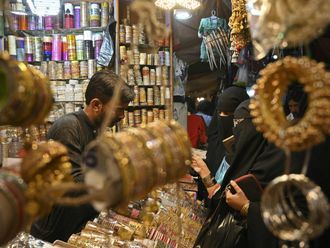Islamabad
The scenic Gilgit-Baltistan region is known as the Switzerland of Pakistan for its snow-white mountains, glistening blue lakes, beautiful landscapes and green cover. But the stunning valleys of this region hide a dark secret.
These valleys are losing their soul as many youngsters have chosen to end their lives. And the loss of young lives is a trend that is regrettably increasing.
What is more baffling is the fact that Gilgit-Baltistan, with a population of 1.8 million, has a comparatively far better literacy rate than the national average. Yet the region has reported suicides of over 300 young boys and girls since 2000.
Last month alone, six youngsters reportedly committed suicide in the Ghizer district of Gilgit-Baltistan. A student of grade 8 and resident of Gupes village, Shafait Husain took his life by hanging himself. Another student, Syed Jalal Hussain shot himself in his room while one youngster committed suicide by hanging himself from a tree.
The spate of suicides has not escaped the attention of lawmakers from Gilgit-Baltistan who passed a resolution on May 17 mandating comprehensive investigations into the reasons for suicides.
Deputy Speaker of the Gilgit-Baltistan Assembly, Jafarullah, criticised police for not properly investigating suicide cases. “A few cases declared as suicides by police were later confirmed to be murders after proper investigation on request of the relatives of the deceased,” he says.
Residents of Ghizer district have also expressed their disappointment over police investigations of suicide cases. According to a report published in Pakistan Today daily on May 9, parents alleged that in many cases police did not even bother to register suicide cases just to avoid further investigation.
Senior Superintendent of Police (SSP) Gilgit, Rana Mansoor ul Haq says the suicides in Ghizer are not a new occurrence. He feels the local community and political representatives have to jointly address the issue.
Dr Mohammad Iqbal, Public Works Minister of Gilgit-Baltistan, pointed out that honour killings were also being passed off as suicides.
A local journalist, Manzar Shigri, agrees with the minister. “Honour killings are usually declared as suicides in the region. No government organisation or private organisation has carried out proper investigation to trace reasons for these suicides and their prevention,” he laments.
Multiple factors including financial problems, unemployment, mental disorders as well as use of drugs among youth are leading to rising suicide rates, according to Ghizer Valley lawmaker Nawaz Khan.
Khadija Nawaz, a psychologist, says suicides are often seen as isolated incidents, but such cases are usually the result of prolonged events, such as poverty, academic pressures, bullying, relationship problems, identity problems or parental conflict that make children feel helpless and trapped.
Nawaz, who has worked with the Child Protection and Welfare Commission Unit in Chitral, says the reasons behind pre-adolescence suicides in Chitral are multiple and complex. Mental illness and psychological problems are part of the equation. “We hardly focus on macro-level indicators such as unemployment, rural and urban divide, rapid urbanisation, educational disadvantage, childhood and family adversity, exposure to stressful life events, social and cultural harassment, pressure of family, forced marriages.”
Trend belies high literacy
Suicides and suicidal thoughts in children are alarming and may be much higher than reported suicide cases in Chitral, the largest district of Khyber Pakhtunkhwa province, with a population of about 600,000.
The high rate of suicides is also difficult to gloss over in Hunza district, which is known for its extremely high literacy rate, tourism and entrepreneurship.
“The women of this region are fairly educated. But the rising education level has not changed the tribal and patriarchal mindset of the region. The women can study but cannot work,” which leads to frustration, says Israr Uddin, Coordinator in the Pakistan Human Rights Commission.
Rashida Perveen, an activist who supports depressed women in the region, believes “depression is one of the main reasons for suicide among women followed by domestic violence.”
There is no exact figure but a World Health Organisation report puts the annual suicide rate in the country at between 15,000 to 18,000.
The suicidal trends in Gilgit-Baltistan indicate an underlying issue that Pakistani youth that make up over 60 per cent of the country’s population are deprived of equal opportunities of education, health and employment, leading to distress and anxiety. “If they don’t have the right balance of opportunities, resources and hope, they can get bored and hopeless,” explains Dr Murad Musa Khan, chairman of the Department of Psychiatry at Aga Khan University Hospital, Karachi.
Prevention of suicide is not the responsibility of one sector but society as a whole, suggests Nisar Ahmad in his research article Suicidal Tendencies in Gilgit-Baltistan and Pakistan. Parents, teachers, close associates, all have to support the child. “Schools especially can play a major role by encouraging healthy environment where young people feel comfortable to discuss their emotional problems,” he says.
Expert advice
Psychologists and economists believe increased public health spending may lower suicide rates. Pakistan should increase its spending on health, education. Mental health programmes should be integrated within the primary health care system with counselling centres at community level, Ahmad advocates.
Another study, Epidemiology of Suicide in Pakistan by Murad M. Khan and others, proposes formation of a national suicide database to help inform policymakers and monitor effectiveness of suicide prevention programmes. Health experts recommend that the Pakistan government should focus on youth health, education and empowerment to ensure a successful future for the youth and for country’s prosperity.












